Project RAILGUN
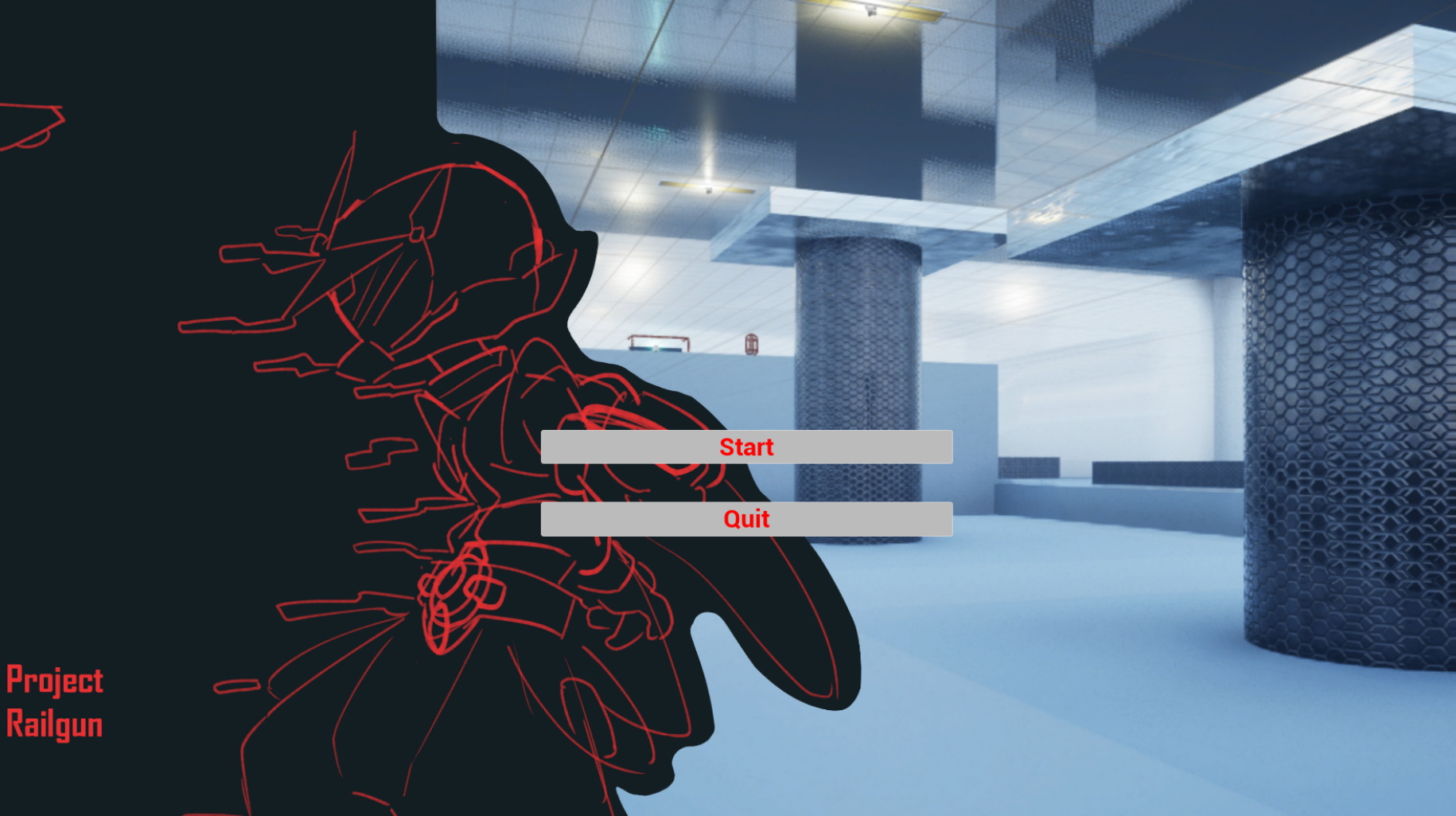
Screen capture of title screen.
Project RAILGUN was a Unreal Engine 5 project developed during my studies at Cal State East Bay in collaboration with Katelyn Ang, Emmet Beebe Foley, and Yuhtoku Fujikake. Given a loose goal of a game project to last at least five minutes, we settled on creating a fast-paced first-person shooter prototype centered around high-speed movement and a single, powerful “Railgun” weapon. The objective was to design a gameplay loop that rewarded accuracy, momentum, and precision, delivering a tight and skill-driven experience. This project represented a significant evolution from my earlier work, transitioning from experimental mechanics to a more structured and cohesive game experience.
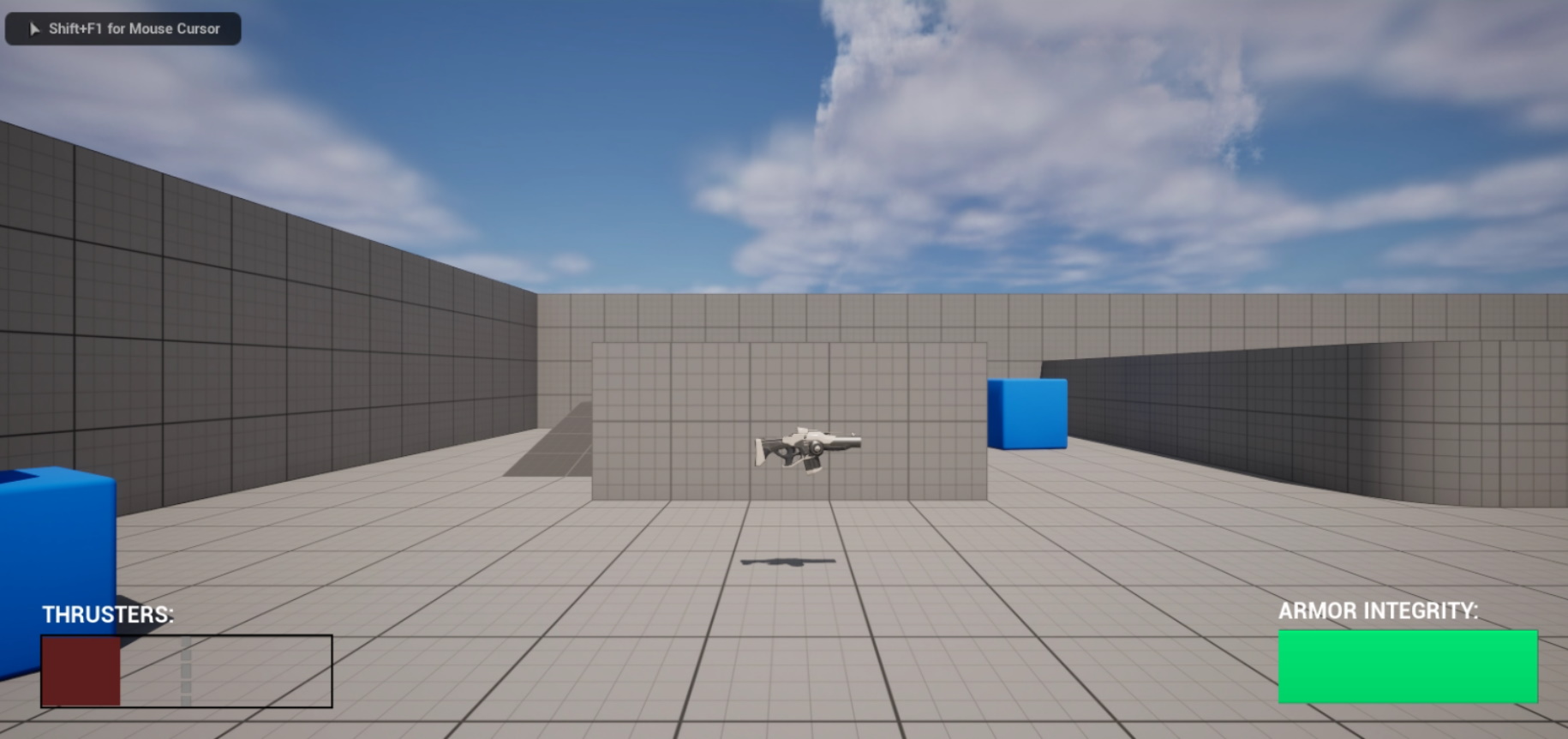
Early prototype environment in Unreal Engine.
As the team’s lead programmer and one of the primary creative contributors, I was responsible for implementing the game’s core mechanics, systems design, and backend structure. This included scripting player controls, developing the Railgun’s combat logic, and establishing tools to support efficient level and encounter creation. I also guided key gameplay decisions during concept and iteration phases, coordinated early prototype testing, and integrated player feedback into design adjustments. My work extended beyond technical implementation, contributing to the creative vision by suggesting a basis in old 'B-Movie' films.
To bring the concept to life, I began by prototyping in Unreal Engine using the First-Person Template as a foundation, experimenting with the gamefeel before committing to design documentation outlining later systems. I gave immense focus to our central mechanic early on, the Railgun itself—a one-hit-kill weapon designed to encourage precision and constant motion. The Railgun’s reload system was tied to accuracy, rewarding players who landed shots with faster recharge times, while additionally applying heavy 'knockback' to the player in the air. To achieve the highest mobility, is to open the risk of losing your primary offensive tool for longer, unless you 'chain' together from enemy to enemy, while simply helping to sell the power of the weapon. In parallel, I designed the dash system to be simple and intuitive, keeping it limited to eight directions for consistency and control. Vertical dashing was initially tested but ultimately removed to preserve clarity and maintain balance in player navigation to not render the 'Railgun Jump' redundant.
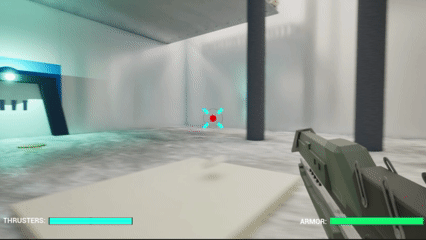
Does this count as a rocket jump? At the least, there isn't self damage involved.
Playtesting in April 2025 provided valuable feedback on level readability, difficulty, and player control. One key adjustment that emerged was the addition of a very short ranged punch, with players desire for one causing me to readdress our initial vision. In testing, while seemingly just a fallback option, it opened space for high skill execution when combined with movement. An additional element of tuning applied after testers found the melee enemies punishing was adding a telegraphed wind-up before their attacks to maintain challenge without sacrificing fairness.
From a technical standpoint, one of the most significant improvements came from overhauling the enemy spawning system. The original version relied on hardcoded blueprints for each encounter, which made design iteration slow and cumbersome. I replaced this with a modular spawn node and boundary setup, complete with adjustable parameters accessible through dropdown menus. This redesign reduced iteration time dramatically, allowing me to tweak encounters and pacing in seconds instead of minutes.
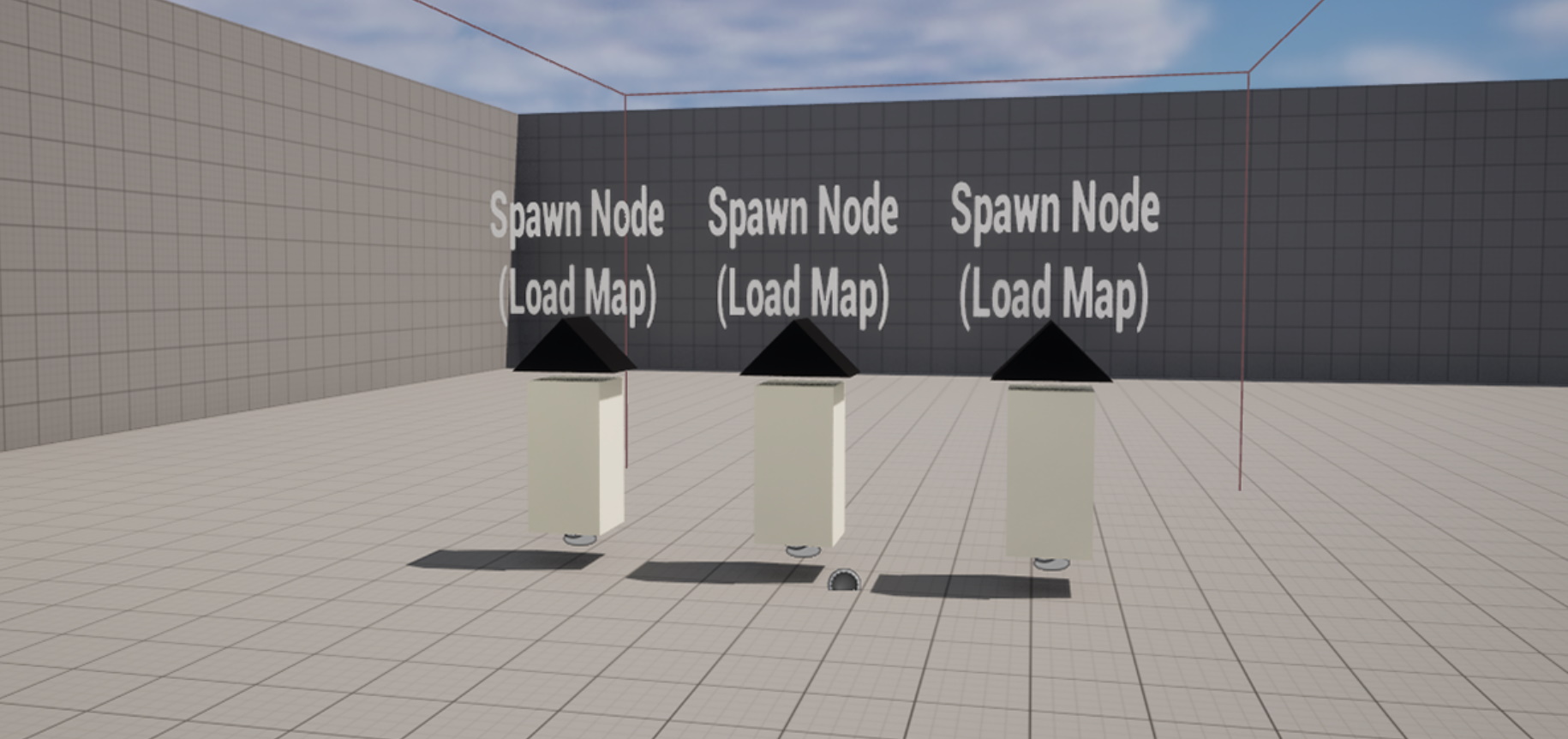
Display of new internal spawning system tool.
The project concluded with a rebuilt level that featured more refined geometry, improved encounter flow, and a focused visual direction. Some notable work from my colleagues include Foley's illustrations, Fujikake's processing of playtests, and Katelyn Ang's material work. Through this process, Project RAILGUN became a compact yet expressive demonstration of how focused mechanics, rapid iteration, and thoughtful system design can coalesce into a cohesive gameplay experience.
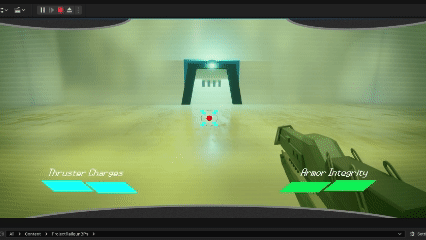
Why spawn enemies when they expect it ALL the time?
In reflection upon this project, I still adore the feel of the "Railjump", working well beyond initial expectation for how cleanly it offered a trade of offensive to burst movement. It is to me what sets this Railgun apart from the others you've seen in games. When considering what I wish to have done better, there is a heavy reliance upon stock animations within Unreal's Template I could have operated to touch up.
Credit for External Resources used in Project
- Effects such as dashing, double jumping, damage, were sourced from Pixabay. The creators attributed are: freesound_community: Electric Shock, Energy Gun, Gamma Laser, Gas Leak, Woosh, Ough. RescopicSound: Impact
- The music that plays in all levels are drawn from the band Hollywood Burns, sampling the following songs:
A Moment of Bliss
Black Saucers
Californian Nightmare
Silent Fortress
Revenge of the Black Saucers
Closing Titles
- The Railgun Model was created by CalWhite on sketchfab https://sketchfab.com/3d-models/halo-railgun-redesigned-ddb78bd428fa4be7a8b3613be5480192